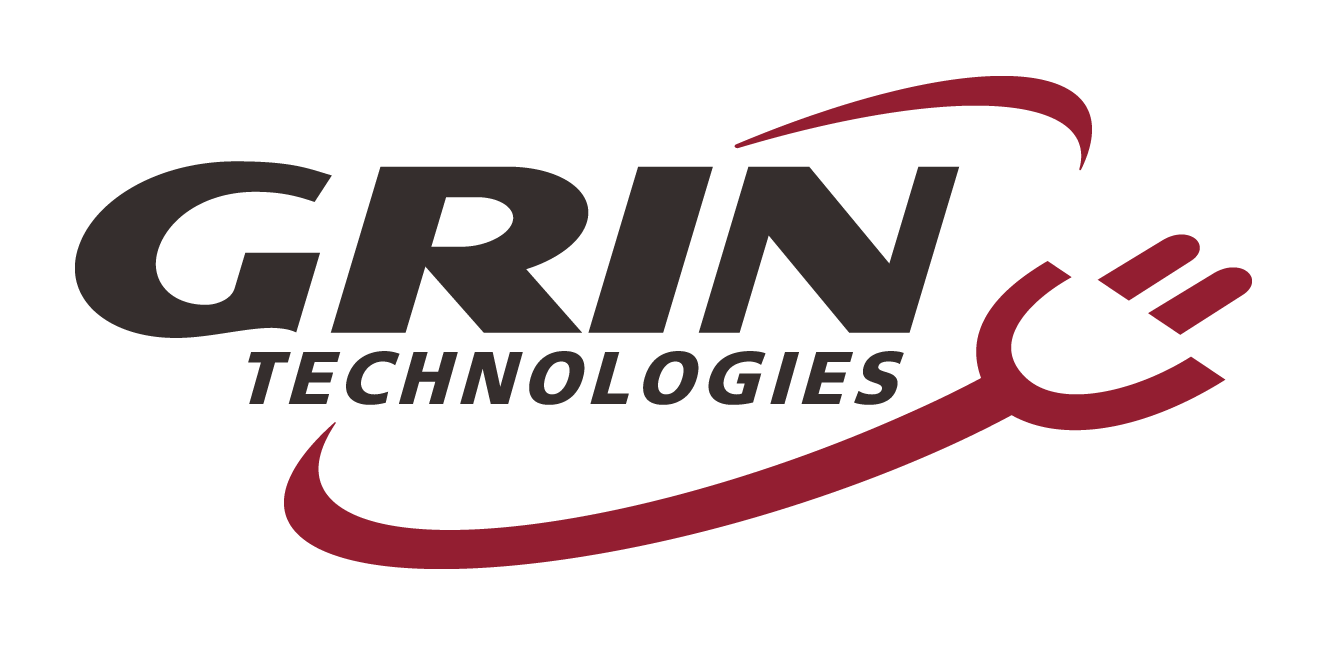News
Rowing Bikes and the Suntrip, VLog on YouTube
The clock is fast approaching with just 3 weeks left before Justin and Anne-Sophie head to France for the Suntrip solar ebike race. We've recently made great progress in adapting a craigslist trike purchase into the back-to-back-tandem-solar-electric-rowbike of our dreams. What started off as this:
Is now looking more like this!
Actually, that's from last weekend. The current iteration has a solar roof installed with electric power and turned plenty of heads on it's maiden solar powered trip to the town of Gibsons and back.
If you want to see all the latest build updates, design challenges, and test rides, then now would be a great time to check out our Youtube channel. We've been doing regular VLog posts in preparation for this trip and will be releasing several videos a week during the upcoming crunch.
And while we are talking about videos and rowing bikes, we wanted to share the conversion project from this winter that partly solidified our decision to do the Suntrip tour with a rowing bike component in the first place.
If you've got a rowing bike of any kind that you've been looking to electrify, we'd love to hear from you too to see if the new rowbike mode PAS feature in the CA3.1 would fit the application.
Customer Profiles, could you be next?
One of our favorite aspects of this business is the numerous amazing and creative people that we get to interact with on a daily basis. Ebike technology has a way of attracting people from all walks of life who see an opportunity to solve problems around mobility and transport, often in ways we would have never imagined.
We have a goal this year to release a monthly video profile on someone with a story to tell. That includes those whose lives has been dramatically affected in some way by ebikes, fellow entrepreneurs pursuing ideas that can positively impact the lives of others, and also those who just relish in their own DIY ebike builds.
We are kicking off this series with a quick look at Keith Forbes. Keith showed up unannounced at our shop a year and a half ago, asking if there may be any work opportunities as he was considering a move to Vancouver from Trinidad and had something of a personal interest in transportation technology. We'll let the video show what he's been up to since then!
If you want to stay tuned in to updates like this, now would probably be a good time to subscribe to our youtube channel We have dozens of videos in our editing pipeline that you won't want to miss.
New Geared Motor Options, Fat Axles and Silent Fronts
In the last month we introduced two new geared motor options in our lineup.
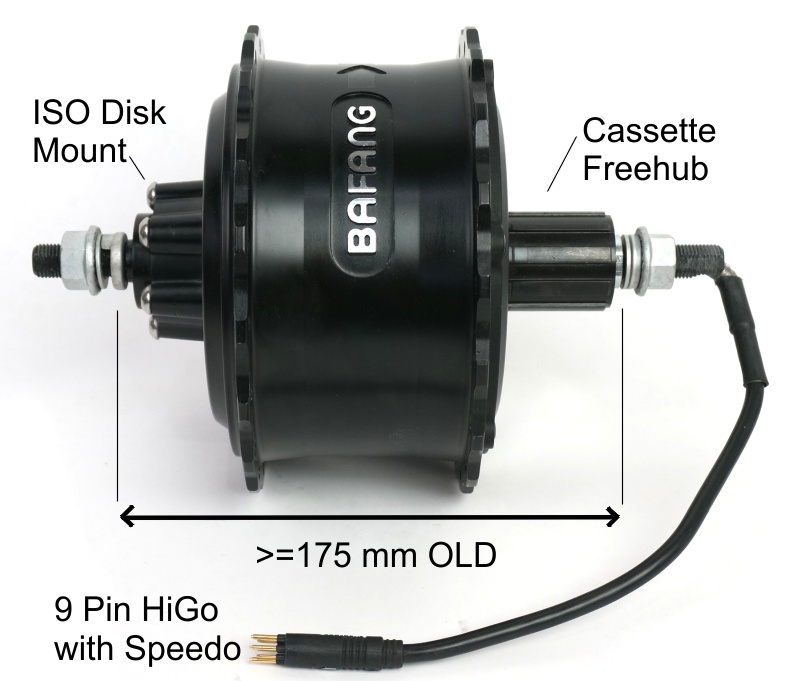 The first of these is the Bafang G60 fatbike motor. It's got a 175mm axle that can fit fatbikes with up to 190mm dropouts using spacers, it uses a cassette freehub for broadest gear compatibility, and it has an impressive power and torque output that approaches the eZee hub motors.
The first of these is the Bafang G60 fatbike motor. It's got a 175mm axle that can fit fatbikes with up to 190mm dropouts using spacers, it uses a cassette freehub for broadest gear compatibility, and it has an impressive power and torque output that approaches the eZee hub motors.
We've got this hub fully modeled on our simulator and available to purchase as either a bare hub or part of a full kit. Combined with the 140mm Sempu torque sensor it's now possible to do proportional torque assist electric fatbike conversion.
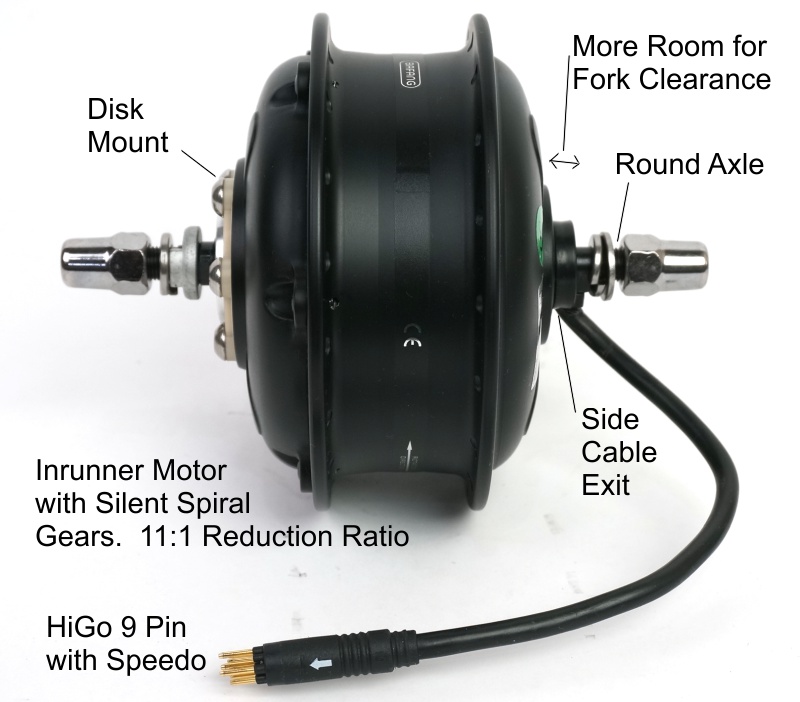 The other motor is the G311, a front equivalent to the wonderfully silent G310 rear motors we introduced late last year. This motor will be replacing the G01 hub for our front mini geared kits. It's a tad lighter (2.3kg), much quieter (spiral gears!), but still has the features from the G01 that we loved. That means a side cable exit, ISO disk rotor compatibility, and 10mm round axle.
The other motor is the G311, a front equivalent to the wonderfully silent G310 rear motors we introduced late last year. This motor will be replacing the G01 hub for our front mini geared kits. It's a tad lighter (2.3kg), much quieter (spiral gears!), but still has the features from the G01 that we loved. That means a side cable exit, ISO disk rotor compatibility, and 10mm round axle.
We have a limited quantity of these new hubs stocked in 3 different winding speeds, from 8.4 to 12 rpm/V for various wheel sizes, and have a large sea shipment due to arrive in early June.
Our remaining fast and standard wind G01 motors are now on sale too.
2018 Statorade Bump
The last 8 months we've been wrapping up some long duration testing of Statorade across different hub motor lines and performing experiments confirming its long term stability. These results have us pumped to introduce this motor cooling solution beyond DIY'ers and into wider markets. As an example, have a look at the video we below showing the effect this has on a small direct drive folding bike motor.
This was filmed last summer when we had a customer requesting a 72V SAW20 Brompton electric conversion. Normally that would be a recipe for motor overheating problems, but as you can see, Statorade is the magic bullet that makes it work.
We've updated our Statorade page to include all the latest test info, and also publicly posted on the forums results on the longevity testing, performance with skateboard hubs, characterization of fill quantity vs RPM, and even wrote a detailed study on the potential benefits of Statorade use in BionX motors.
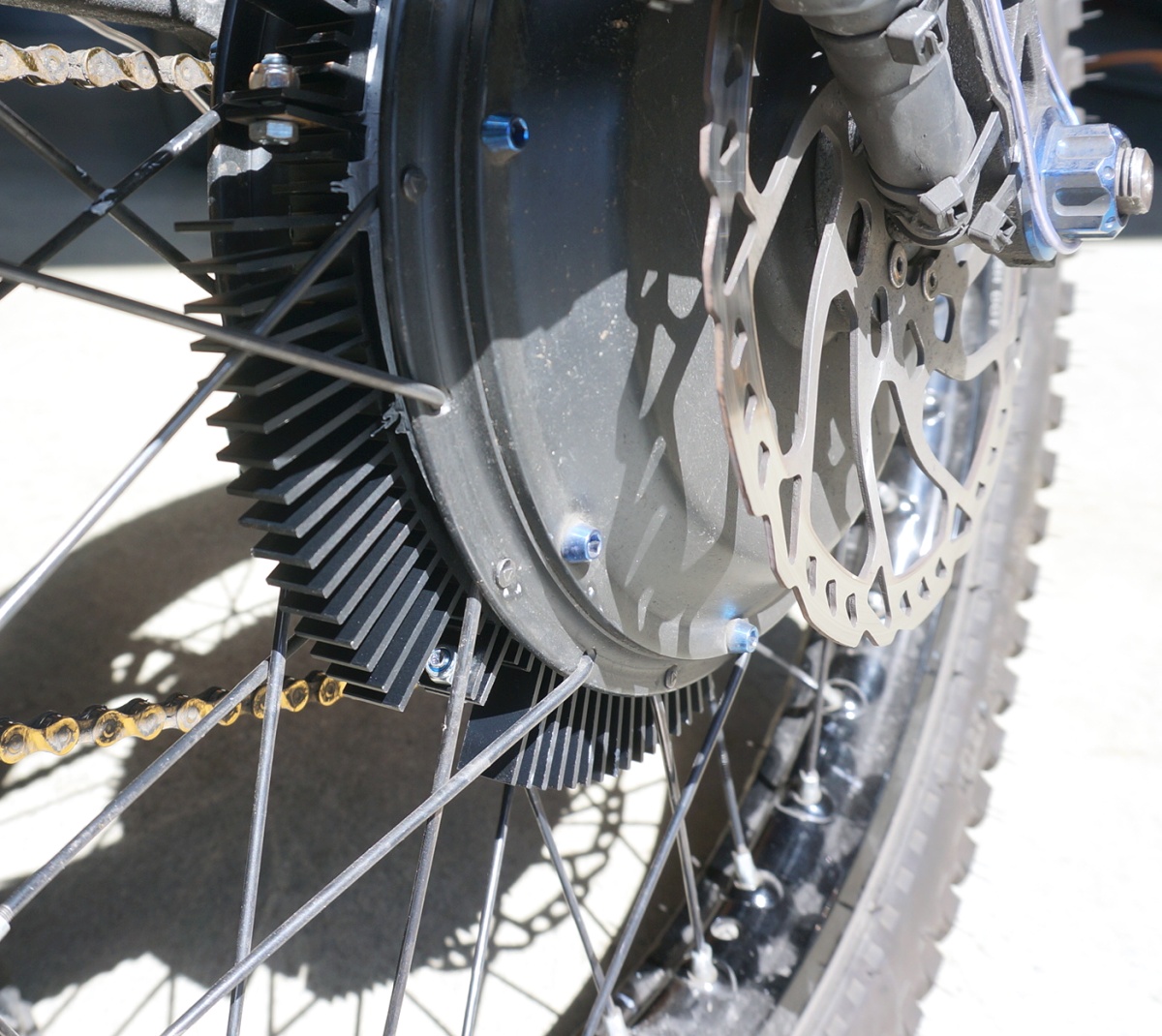 For people wanting to push the effects of Statorade to the max, the Australian made Hubsinks can clamp on to your motor shell and provide additional cooling fins to shed heat to ambient air. These fit our new MXUS Cassette motors, and the 9C, Crystalyte H, and many others. These are listed on our new store category for motor cooling mods. And like other small products, we try to keep a stock of 10mL Statorade syringes on Amazon for easy shipping to US customers. They are sold out now but another shipment is inbound.
For people wanting to push the effects of Statorade to the max, the Australian made Hubsinks can clamp on to your motor shell and provide additional cooling fins to shed heat to ambient air. These fit our new MXUS Cassette motors, and the 9C, Crystalyte H, and many others. These are listed on our new store category for motor cooling mods. And like other small products, we try to keep a stock of 10mL Statorade syringes on Amazon for easy shipping to US customers. They are sold out now but another shipment is inbound.
Email Back Up
Update: Our email was fully restored by 4:30pm in the afternoon. If you sent us an email that bounced during this time period, please send it again and we should receive it fine this time.
**********
At the moment our ebikes.ca email accounts are down as we have been pushing through a set of security updates to our server and hit some glitches. We are working hard to resolve this as soon as possible. For anything urgent please reach us by phone.
1-(604) 569-0902
Our web-store, shipping, and operations are still all up and running and there should be no order delays as a result of this, but if you have comments or additions for an order in progress it would be best to communicate that over the landline. Sorry for any inconveniences.
Intro to Workshop for Bike Mechanics - Thur Mar 22nd
This coming Thursday we are hosting an evening workshop that covers a high level introduction to the various ebike conversion packages offered by Grin, aimed specifically at bike mechanics and others in the local bicycle industry who want to understand what is available for open standard conversion systems. If you are currently working in the bicycle scene and are interested in participating, please contact us by email with some background information to reserve a spot.
Location: #205-950 Powell St (upper lot)
Date: Thursday March 22nd
Time: 6:30 - 9pm
Return to Vancouver Bike Show, March 3-4
This one is for the locals. We will once again have a booth at the Vancouver Bike Show this weekend at the Vancouver Convention Center. If you've been wanting to come by our shop but can't make it during the week, then this could be a good opportunity to visit and chat about suitable ebike conversion options.
Our staff are hard at work this week preparing display fixtures so that we can have all the various motors, batteries, and other items on hand at the show.
Saturday Update: What a great first day at the show and a big hello to the many people who visited our booth and are checking out our website for the first time. The event is on again all day tomorrow (Sunday) until 5pm if you are in vancouver and want to drop by and discuss in person any conversion questions.
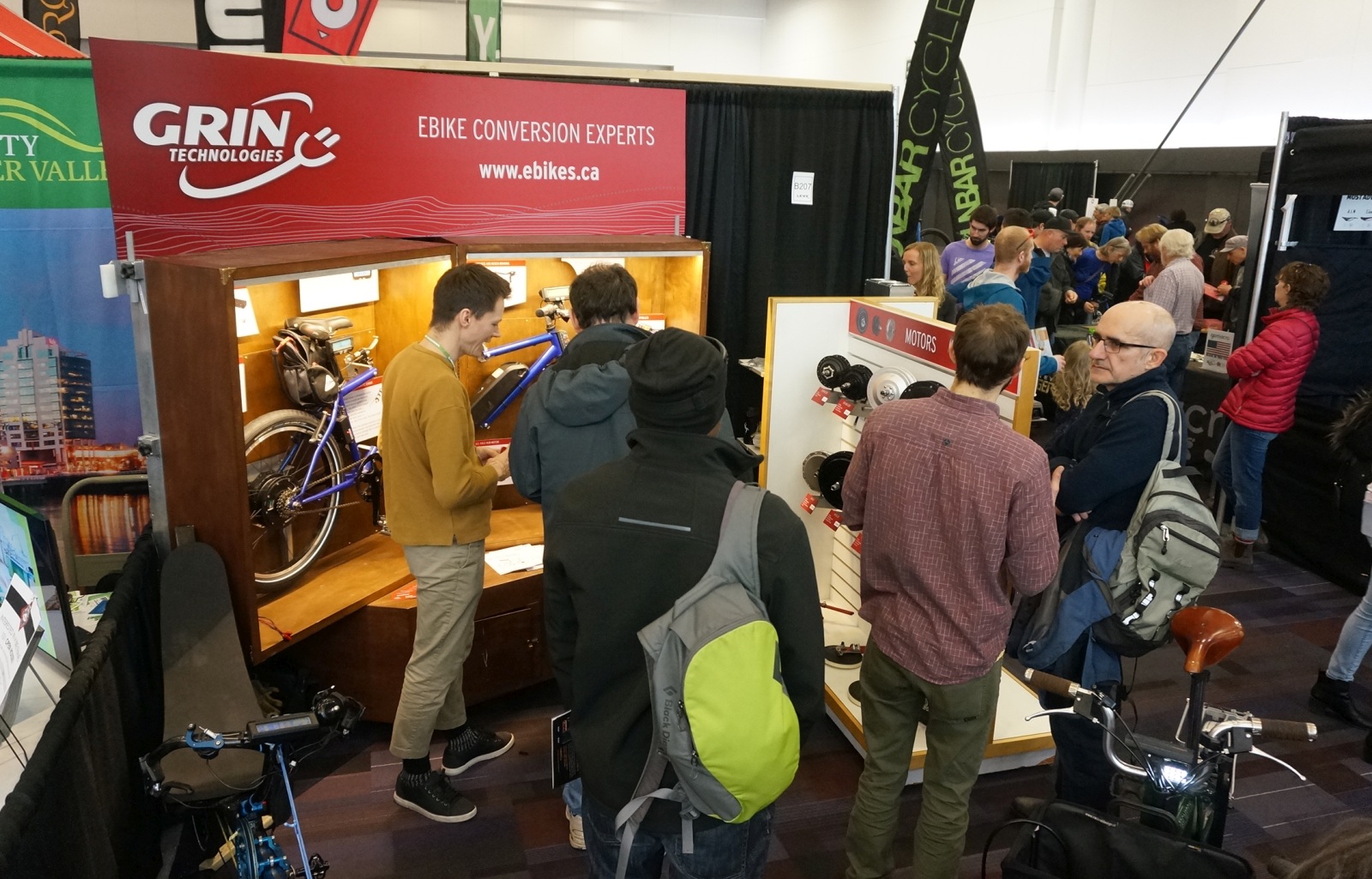
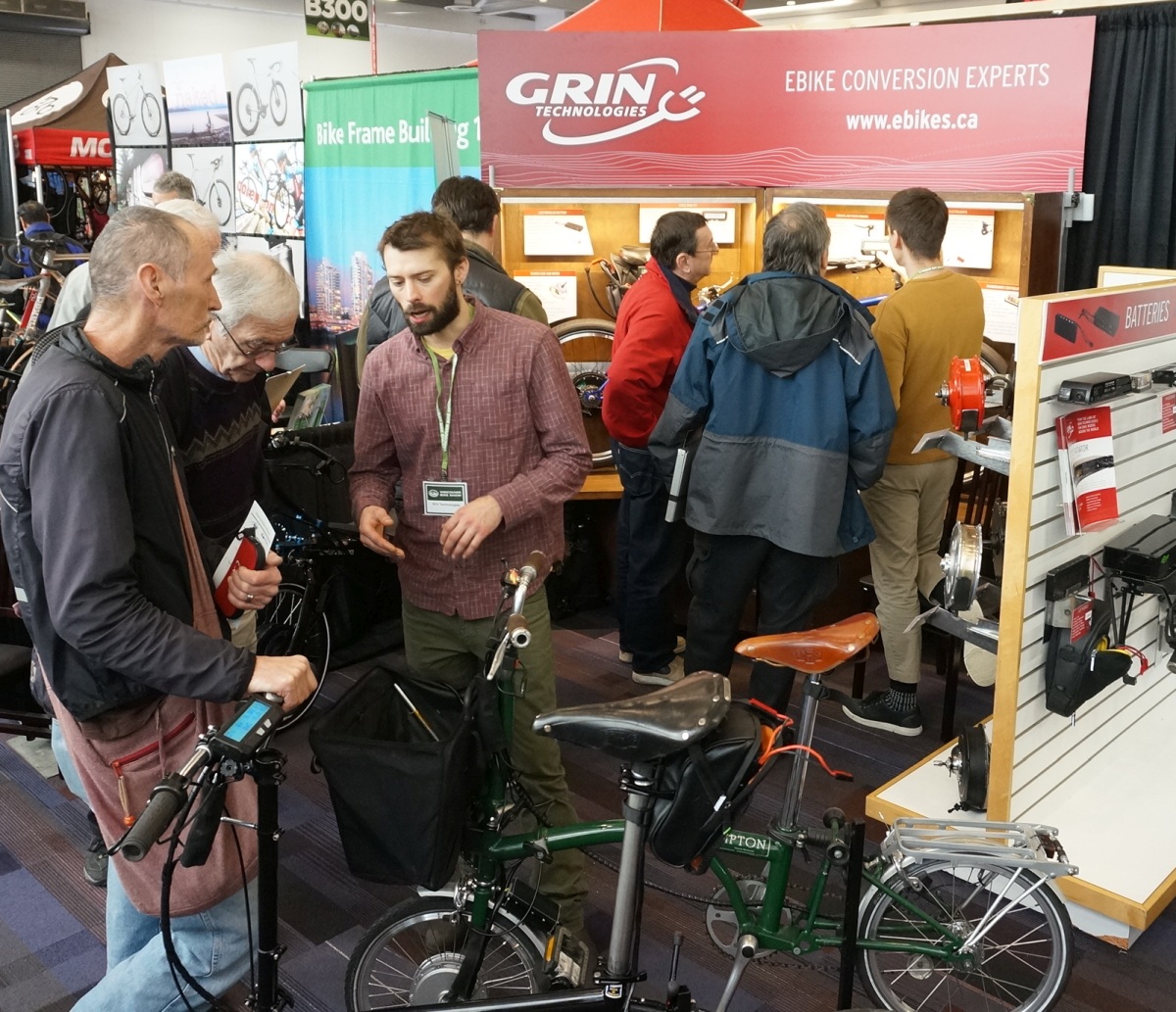
Additional Torque and PAS Sensors
We're happy to have recently added two new pedal sensor options to our catalog.
24 Pole MiniPAS
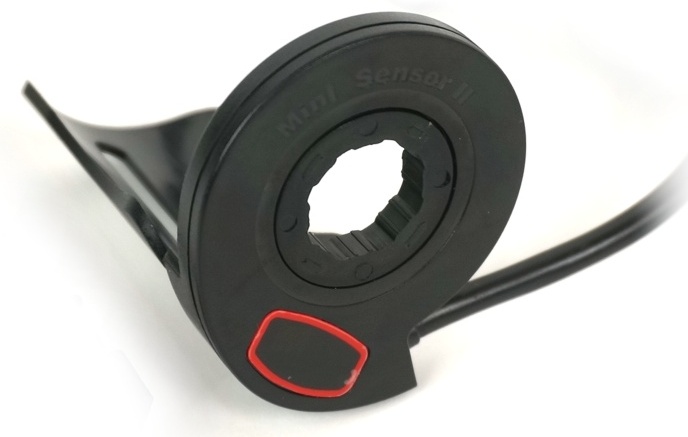 The first is the miniPAS sensor from King Meter which we had modified for plug and play compatibility with the V3 Cycle Analyst. This PAS device has both the disk and sensor tightly integrated into a low profile package that slides over the bottom bracket spindle. The result is a clean install without any of the alignment concerns that are present with separate magnet rings and sensor pickups.
The first is the miniPAS sensor from King Meter which we had modified for plug and play compatibility with the V3 Cycle Analyst. This PAS device has both the disk and sensor tightly integrated into a low profile package that slides over the bottom bracket spindle. The result is a clean install without any of the alignment concerns that are present with separate magnet rings and sensor pickups.
And the best part is that it has a full 24 poles per revolution, providing an immediate response the moment you start pedaling. We've now outfitted most of our staff ebikes with this mini sensor, a V3.1 Cycle Analyst, and digital aux for pedal assist control. The combination is fantastic.
Sempu
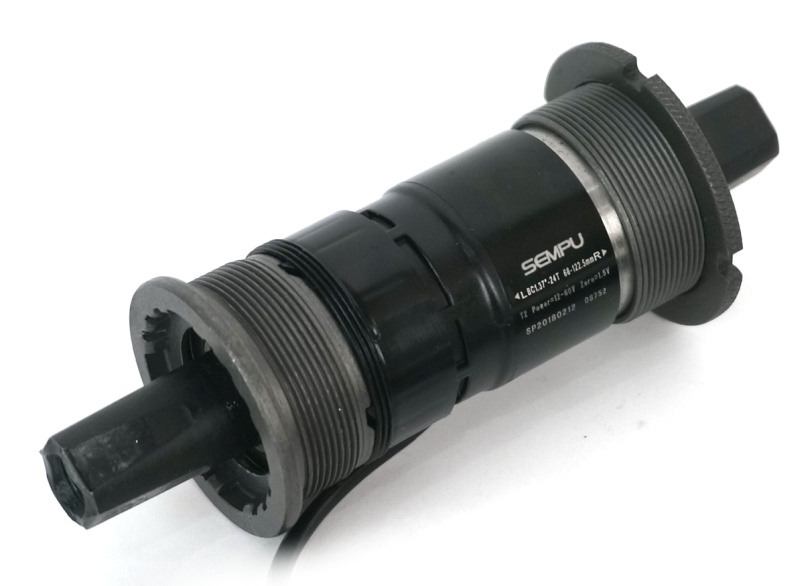 The second addition is a new torque sensor from Sempu. We had sampled Sempu sensors several years ago but ran into reliability issues. However, the latest 3rd generation T2.3 product seems much more robust. It installs as easily as a THUN device, senses force from both left and right pedals, and like the new miniPAS sensor it also has 24 PAS poles for immediate pedal response.
The second addition is a new torque sensor from Sempu. We had sampled Sempu sensors several years ago but ran into reliability issues. However, the latest 3rd generation T2.3 product seems much more robust. It installs as easily as a THUN device, senses force from both left and right pedals, and like the new miniPAS sensor it also has 24 PAS poles for immediate pedal response.
These sensors are available in square taper 115mm, 122.5mm and 127.5mm spindle lengths for 68mm bottom bracket shells, and even in a a fatbike version for 84mm bottom brackets. Our initial sample order of these sensors sold out fast but we expect our full shipment by the middle of march.
New PAS Info Page
And are you confused about all the options of PAS sensors and Torque sensors and whether you need or want them in the first place? Have a look at the new PAS learning section on our web page that explains in some detail the pros and cons of different pedalec sensor options and control strategies. We hope this serves as a useful reference for those wanting to learn more about pedal assist.
CA3.1 Firmware and Software Release
The V3.1 Cycle Analyst firmware that went through various Beta releases last year is getting so ready for prime time. In addition to the digital aux input buttons, factory resets, enhanced ebrake and regen features, and display screen customizations, there have been other updates including:
- Additional PAS modes, supporting cadence control so that you can have the PAS output power or throttle voltages vary with your pedal cadence. There is even a PAS mode for electric assist rowbikes with reciprocating PAS sensors.
- The ability to automatically return to the main display after a given time and have the Aux change pop-up display just in the custom views tab.
- An increase in the output data logging frequency to 10Hz for even better dynamic analysis of vehicle performance
- Pre-loaded settings for all the common torque sensors offered by Grin.
- Ability to copy all settings one set of presets from another.
- A switch to watt-hours rather than amp-hours as the primary battery lifetime usage, for a more universal comparison of total energy expenditure.
The companion software setup utility has also gone through numerous improvements with the 1.53 release. You can now upgrade your CA from a 3.0 to 3.1 firmware and it will preserve almost all of your settings and usage statistics, so there's no need to record and re-enter all your values. There are detailed tooltips over each of the parameters to help you understand their functions, and a comprehensive help menu as well. And to top it off, there is now a single button you can click to fetch the latest firmware from our servers, making any future update process seamless as well.

The most recent firmware build is CA3.1Beta21, and well be giving it 1 week of wider beta testing before we make this the final release CA3.10 version. If you are keen to try this and upgrade from a CA3.0 device but don't have the necessary cables, we have both the USB->TTL programming cable as well as the handy up-down digi-aux buttons available from Amazon.com for easy US shipping.
We'd like once again to thank endless-sphere user Teklektik for his tireless efforts at instilling structure and discipline in the Cycle Analyst development and getting the firmware to deliver on our original vision, and to our software team and co-op students who produced the matching CA Setup Utility suite.
Next up on the CA3 front: Android app support, updated documentation, and more video tutorials!
Sunny Trips for 2018
We're pretty excited about what 2018 has in store for the ebike space, and one of the events this year that has us most pumped is the 2018 Sun Trip solar ebike challenge.

For those of you who haven't seen it yet, the Sun Trip is an annual competition run by some (obviously crazy) Frenchmen that challenges people to tour ebikes across great distances, with solar power as their only allowable charging source. It started off in 2013 with a 7500km ride from France to Kazakhstan, and has run most years since then with with trips of varying length and upwards of 30-40 participants. What makes 2018 ride special is that it will be the the most epic challenge yet, covering a full 12,000 km from Lyon, France, to Canton, China.
We've helped out many teams build solar ebike vehicles for Sun Trips in the past and have always had great admiration for this event from across the water. But now it time to join in the fray!
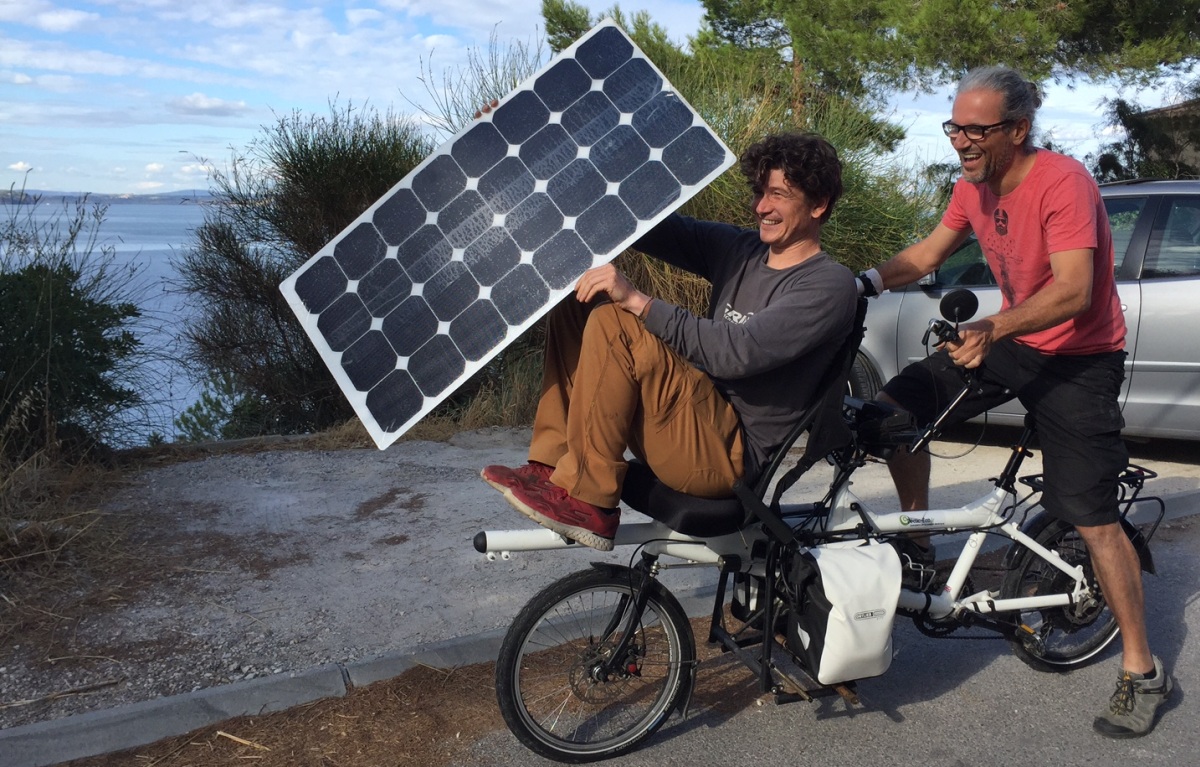
2018 marks the 10 year anniversary of Justin's first cross-Canada ebike tour and he's itching for another adventure, and what could better fit the bill. Grin will be participating in this amazing ride, both as a competitor on the ground and as a formal sponsor helping with their technical logging requirements. Many of the announcements and product roll-outs you see in the coming months will relate in some way to this Sun Trip.
And if you're just reading about it for the first time now thinking wow, I'd love to do that, the event registration formally closed in December. However, the organizers are keen to see more participation from North America, so if you have the right kind of aptitude and attitude to pull off building and riding a solar ebike on a 12000km trip like this, send the Sun Trip people your plea, they'll maybe make an exception :-).
In any case, a happy start of 2018 to everyone.


 Canadian
Canadian